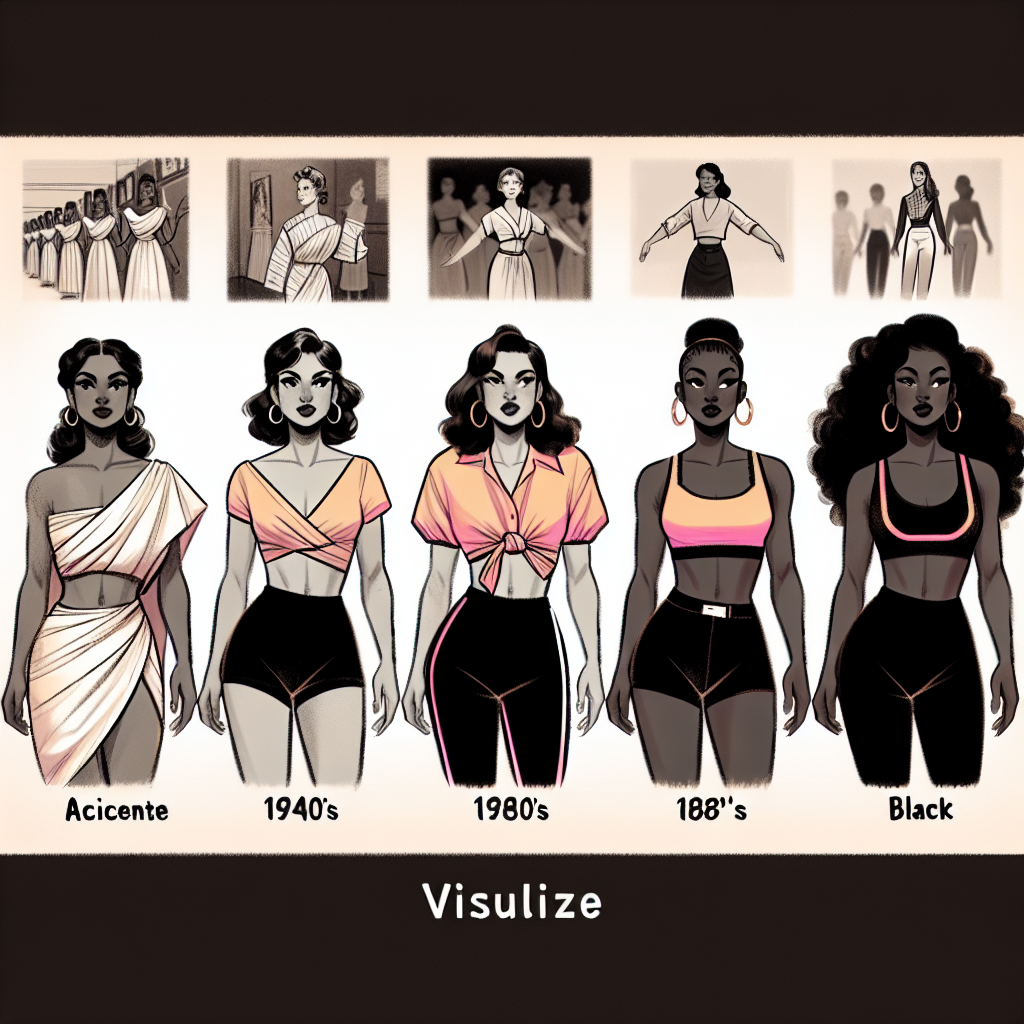The flirty crop top trend has evolved over several decades, showcasing a rich tapestry of cultural shifts, fashion revolutions, and iconic moments in popular culture. The crop top, defined as a garment that exposes the midriff, has roots tracing back to the 1940s, primarily influenced by wartime fashion. During World War II, women entered the workforce in large numbers, leading to the introduction of more practical and functional attire. As a result, midriff-baring tops emerged as a symbol of freedom and femininity, reflecting a significant transformation in women’s roles within society.
In the 1960s, the crop top gained mainstream acceptance as part of the broader counterculture movement. Iconic figures like Janis Joplin and the hippie movement popularized the casual, free-spirited look that included cropped garments. Brightly patterned fabrics and bohemian styles defined this era, and the crop top quickly became associated with youth culture and rebellion against conventional norms. The garment’s playful nature resonated with a generation seeking to express individualism and challenge societal expectations.
The 1970s saw the rise of disco and the introduction of more form-fitting, glamorous styles. Celebrities like Cher and Donna Summer embraced crop tops as part of their stage costumes, further embedding the garment in pop culture. This period also witnessed an emergence of designer labels that elevated the crop top beyond casual wear, incorporating luxurious textiles and intricate designs. The flirty aspect of crop tops was amplified by the disco scene, where movement and body positivity became paramount.
During the 1980s, crop tops experienced a significant boom, particularly in the realm of sports and fitness. With the rise of aerobics and classic figures like Jane Fonda leading the charge, athletic-inspired cropped tops made their way into everyday wardrobes. The association of crop tops with fitness and empowerment appealed to women seeking to embrace an active lifestyle while expressing their femininity. However, it was the combination of pop icons and television shows that solidified the trend. Series such as “Miami Vice” and singer Madonna’s bold fashion statements popularized the look, showcasing crop tops in diverse contexts.
Entering the 1990s, the crop top transitioned into a symbol of youthful rebellion and urban culture. Influential figures like Britney Spears and the “Spice Girls” embraced the style, making it a staple in teen fashion. Streetwear brands began incorporating the crop top into their collections, blending grunge, punk, and hip-hop aesthetics. This era marked a pivotal moment where the crop top was no longer associated solely with femininity; it began breaking gender norms, appealing to a broader audience.
The 2000s further transformed the crop top landscape, witnessing a resurgence in popularity thanks to reality television and celebrity culture. Shows like “Friends” and “The OC” featured characters styling crop tops and high-waisted bottoms, making it a go-to outfit for young adults. The early 2000s captured a unique playful vibe, where tiny crop tops adorned with sequins and slogans became emblematic of pop culture. Viral social media platforms also began to emerge, allowing new trends to circulate rapidly. The limit on crop top styles expanded into various cuts, lengths, and embellishments, fueling an array of options for self-expression.
In the 2010s, the resurgence of 90s and early 2000s trends breathed new life into the crop top phenomenon. High-profile events and red carpets saw celebrities like Rihanna and Kim Kardashian donning designer crop tops, reaffirming their status as fashion staples. The empowerment movement gained traction, with crop tops being marketed as body-positive apparel suitable for all shapes and sizes. This inclusivity allowed people to embrace their bodies more fully, uniting diverse communities under a shared love for fashion.
Today, crop tops remain a versatile trend, embraced across all age groups and demographics. Contemporary fashion houses continually reinterpret the style, integrating sustainability into designs and experimenting with fabrics, cuts, and prints. Social media influencers help propel the crop top trend into international markets, often pairing it with various bottoms and accessories to create bold, individual looks.
The journey of the flirty crop top from a wartime necessity to a mainstay of contemporary fashion reflects broader cultural narratives. Each decade has influenced how crop tops are perceived and worn, highlighting the intersection of fashion with societal shifts. As styles evolve, one thing remains constant: the crop top is more than just clothing; it embodies themes of rebellion, empowerment, and the celebration of individuality. The flirty crop top trend signifies cultural evolution, shaping and reflecting changing attitudes toward femininity, body image, and self-expression, ensuring its place in fashion history for years to come.



